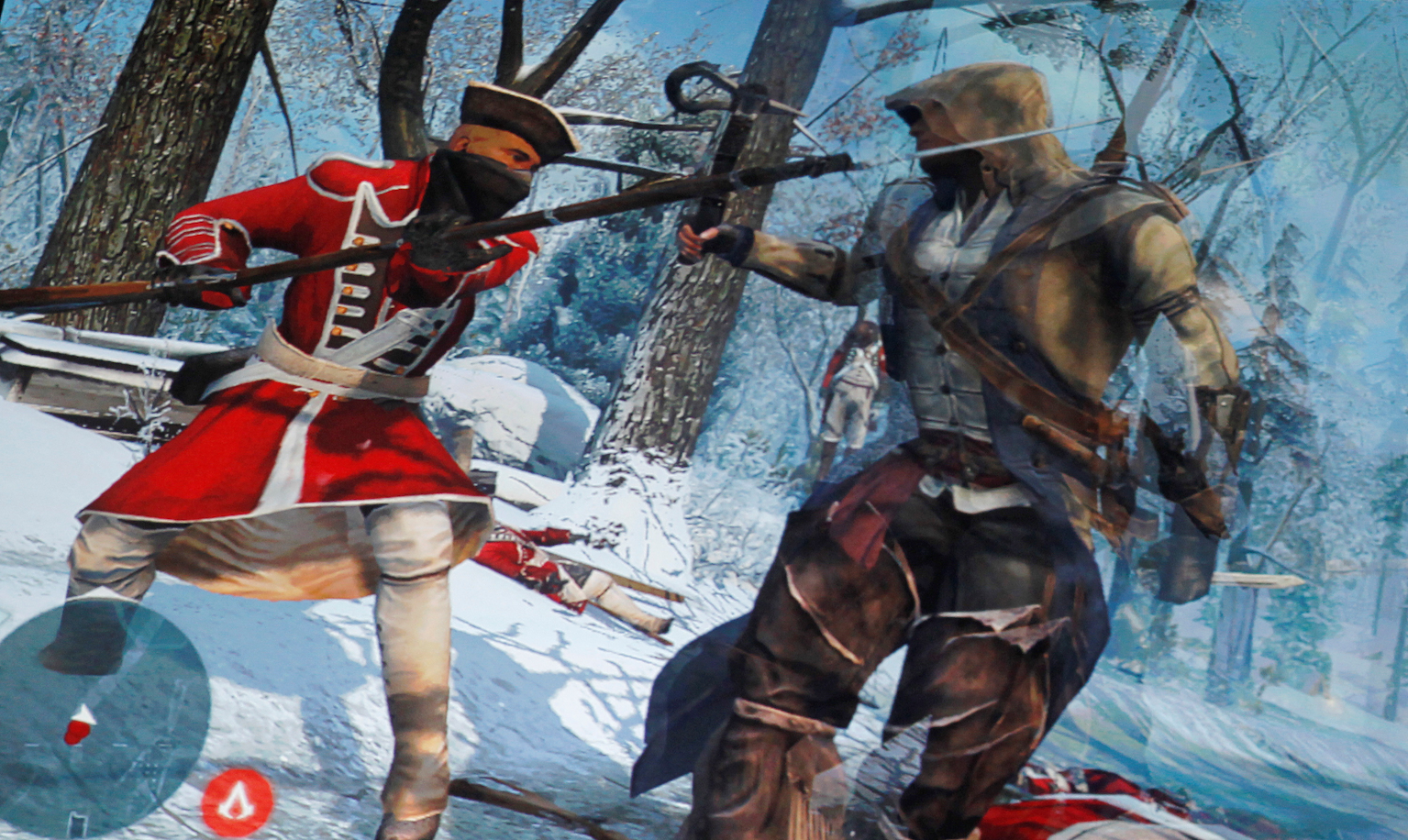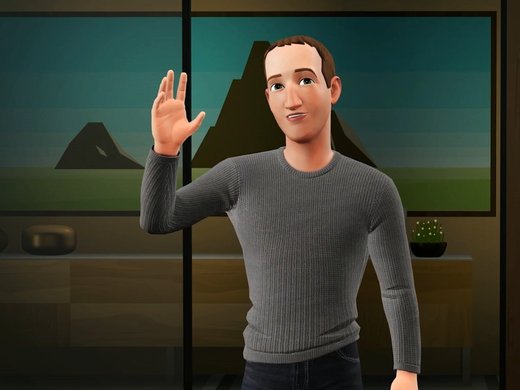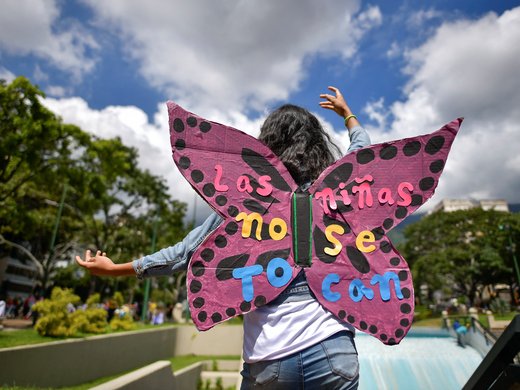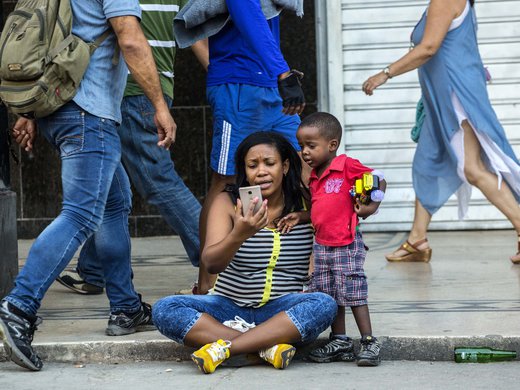If I were to ask people on the street how many women play video games compared to men, most would likely say that more men than women game. Yet, despite this perception, according to a 2015 Pew Research study, in America the numbers are almost equal. In 2020, 48 percent of US gamers were women, up from 45 percent the year before.
As American sociologist and professor T. L. Taylor wrote in 2003, women enjoy playing video games, including some “typically defined as masculine games,” even though these games have “often not been explicitly designed with them in mind and in fact may at times actively disenfranchise them.”
Perplexingly, 20 years since Taylor wrote those words, and despite larger numbers of women gaming today, racial and gender inequities and harassment persist in gaming — expressed through both the designs of the games themselves and player interactions online.
In fact, the complex experience of women gamers bears similarities with their experiences on social media but has often been overlooked. Many games today, especially MMORPGs (massive multiplayer online role-playing games), with their chats and live-streaming features, function as intimate social spaces where players and streamers interact live and form communities. This networked environment, as well as the anonymity that screens and avatars provide, leaves the door open for meaningful interactions, but also for nefarious ones, including online harassment and disinformation campaigns.
One of the most infamous instances of hate against women in gaming is Gamergate, a campaign that in 2014 targeted women gamers, developers and academics alike. Although awareness of the rampant misogyny in the gaming ecosystem is building, change is slow, and women and marginalized gamers are taking matters into their own hands by creating their own organizations to change the industry.
In the meantime, to understand online harassment against women gamers and where the source of the sexism in games lies, we must look at the culture that condones this behaviour, including who creates and develops the games, and how.
“A Uniquely Uncivil Medium”
The harassment women face while gaming varies in type and across platforms and venues: from hate raids targeting women and people of colour on the platform Twitch, to doxing and cyberstalking, as well as racist and sexist messages in stream chats and at e-sports competitions. As with social media, the toxicity also doesn’t stop when targeted players mute their harassers. On the contrary, the act of muting someone often leads to other players ganging up on a gamer to ostracize that individual or taking the harassment to social media. And again, as with social media, the situation is even worse for women of colour. It’s an understatement to say that being a woman player often requires having a thick skin and overcoming barriers.
One of the most infamous instances of hate against women in gaming is Gamergate, a campaign that in 2014 targeted women gamers, developers and academics alike.
In the 2014 Gamergate attacks, game designer Zoë Quinn became the subject of a well-organized online and offline campaign of violent insults and threats after her former boyfriend released personal information about her. From 4chan to Reddit and Twitter, Quinn was harassed endlessly and even had to move from her home after she was doxed on social media.
Quinn is not the only victim in Gamergate. American video game developer Brianna Wu was targeted when she shared a meme making fun of Gamergate on Twitter. She was bombarded by rape and death threats, and her personal details were disclosed on 8chan, a controversial chat forum. Like Quinn, she fled her home. Anita Sarkeesian, a feminist cultural critic and founder of Feminist Frequency, was yet another target of Gamergaters’ hateful attacks. Sarkeesian received messages such as “Feminists have ruined my life and I will have my revenge” and had to cancel a speech at Utah State University after someone emailed with a threat to carry out the “deadliest school shooting in American history” at the event. The message was signed “Marc Lépine,” the name of the man who murdered 14 women in a mass shooting at Polytechnique Montréal in 1989. A chilling symbol.
Qinn, Sarkeesian and Wu have something in common: they were trying to change the gaming industry. Quinn had designed a game named Depression Quest, where the player is put in the position of someone living with depression, a rare theme for a game. Wu, meanwhile, founded an all-female studio called Giant Spacekat and launched Revolution 60, a game with an all-female cast. In 2012, Sarkeesian set out to challenge the stereotypes of women in video games through a series of videos titled Tropes vs. Women in Videogames.
Gamergate was a particularly violent expression of a toxic culture against women that had by then already been a reality for a long time in gaming and was now crossing over from streaming platforms to real life. As communication and gender studies researcher Kishonna Gray and her colleagues Bertan Buyukozturk and Zachary G. Hill wrote in 2017, “symbolic violence within video games [has] evolved into threats of physical violence in the real world” for women who speak out about problems in gaming culture. From a feminist perspective, Gray, whom I spoke to when researching this article, argues that Gamergate and other hate campaigns were a backlash against the inclusion and participation of women and members of marginalized communities in an ecosystem that had been dominated by white men. Similarly, Lisa Nakamura, a researcher on media and gender studies, argues that Gamergate “made public that gaming can be a uniquely uncivil medium for women, queer people and people of color.”
Representation and Depiction Failures
Indeed, the gaming culture and industry have gained notoriety for their toxicity. As game developer Wu told the BBC, “I think there is a war on women in technology. It’s not like I’m advocating that we ban Call of Duty or anything silly like that, I’m asking is for companies to look at their hiring practices, to hire more women…and make sure they portray women in their games in a socially responsible way.”
The underrepresentation and depiction of women in games has long been the subject of criticism and debate. Grand Theft Auto, Tomb Raider and Final Fantasy, for example, have been criticized for their derogatory portrayals of women.
Analyzing the representation — or lack thereof — and the depiction of female characters in digital games, we see how they can perpetuate existing stereotypes and inequalities of power, as well as negate the empowerment of women and members of marginalized groups.
There has long been an imbalance in the representation of gender, race and age in video games. A large-scale census of 150 games conducted in 2009 showed systematic overrepresentation of white males and systematic underrepresentation of women, Black, Hispanic and Native American characters. Indeed, 89.55 percent of the primary characters were male (white male characters accounted for 84.95 percent of all primary characters). In the free game Temple Run, players had to pay to play a female character, even though 60 percent of people playing the game were women and girls. Only after a 12-year-old teen demanded change did the company create a free female character. Only in 2022 did the highly popular game Grand Theft Auto introduce its first playable female lead character.
Intersectionality also matters. In 2014, Tanya DePass, a queer Black woman, saw no character like herself in video games. When Ubisoft said they could not include female characters in Assassin’s Creed because “women were too much extra work to animate,” DePass started the hashtag #ineediversegames and created an organization of the same name in order to bring more Black and queer characters in games and to diversify the industry.
Failure of representation is significant because it sends a message to the audience and pushes unrepresented groups to the margins. A visual medium’s depiction of a group has “ implications for both self-identities and considerations of other groups” because it says something about how people from certain groups are valued. Thus, when female avatars are underrepresented or depicted in derogative or powerless ways, that perception may be internalized by gamers. It can also have an impact on players’ identity and self-esteem, sending a signal to certain people that they are unimportant and lack agency.
Things have been very slow to change. In 2020, only 18 percent of video games had female protagonists. But adding more female characters is not enough. According to an analysis of women, games and gender, women players want to have “choice of characters, as well as control over their representation” in order to maximize their sense of agency.
Despite larger numbers of women gaming today, racial and gender inequities and harassment persist in gaming — expressed through both the designs of the games themselves and player interactions online.
The portrayal of gender, women in particular, has been subject to criticism. Gray, Buyukozturk and Hill note that for a long time women have been framed as physically and mentally inferior, or relegated to certain occupations, which perpetuates male domination. They write that “women’s agency is limited within the gaming context, as the gaming culture seems to relegate them to the same supplementary positions their character counterparts are positioned in.” In other cases, women are highly sexualized, wearing more revealing clothing, or — to get into the nitty-gritty of gameplay — only given access to less powerful weapons. The latter might seem irrelevant to the casual observer, but to gamers it sends a message that women are weaker. One of the most common complaints among women players is known as the “chain mail bikini” issue: the fact that female characters who are supposed to fight are designed with a bikini on and supplied with other outfits that are completely inappropriate for the task. As one player put it, “Who would go into battle wearing a chain bikini?” As T. L. Taylor explains, “bodies are not simply neutral objects…but act as central artifacts through which our identities and social connections are shaped. Bodies carry particular social meanings….”
In her 2012 Tropes vs. Women in VIdeo Games series, Sarkeesian showed how women in many games were depicted as passive or helpless. The series episode titled “Damsel in Distress” shows how women are disempowered, portrayed as weak and marginalized, sometimes to make male characters stronger, thereby reinforcing and amplifying certain ideas about women’s abilities. “We have cowering maids, suicidal prostitutes, the kindly caregiver, the evil mistress, the evil madam and the evil witch. It’s pretty standard stuff in game narratives unfortunately,” Sarkeesian said in an interview to IGN.
A Toxic Industry
To understand where the source of the sexism in games lies, we must look at the structural and cultural problems in the gaming industry itself. In 2022, the industry remains largely run by men, especially white men, with women representing on average 30 percent of game developers worldwide. According to the Protocol Diversity Tracker, “an ongoing project to collect and analyze employee diversity data from the most powerful companies in tech,” the percentage of women employees globally at each of Activision Blizzard, Unity and Electronic Arts was 24 percent in 2020 and 2021. Worse, Protocol reports that the percentage of Black and Hispanic employees in the tech industry globally for the same period is under 10 percent. Other companies such as Ubisoft and Epic do not report diversity numbers, perhaps wanting to avoid backlash. This is not solely a problem at North American companies. In the Japanese gaming industry, only 12 percent of game developers are women, and most of them do not stay in the industry for more than five years.
The lack of representation means that game developers, designers and marketers do not necessarily have women in mind. As Kishonna Gray, Gerald Voorhees and Emma Vossen write in the book Feminism at Play, “the promotion and marketing discourses employed by the gaming industry are also complicit in reinforcing the assumption that women are intermittent, casual participants while man are perpetual hardcore players.”
One striking example that helps us understand the causal effect between the industry and the content of games is the character Purna Jackson, who first appeared in 2011 in a game called Dead Island. In a conversation, Kishonna Gray — a gamer as well as a scholar — told me that Jackson was the first Black woman character she was able to play, which was an excellent innovation. Yet it soon turned out that the “internal code object” used to describe Purna and her ability to kill zombies — that is, the variable name used to label the character in the code — was “Feminist Whore.” Gray says that coder’s decision illustrates the misogyny and push-back within the industry, including among programmers, to efforts to diversify games. The chosen name reflects a level of anger and violence toward women, especially women of colour. Gray says the incident should lead us to question who works within the gaming industry and how it must be diversified in order to change its culture and the experience of marginalized gamers.
The #MeToo movement also exposed a lot of sexism within the gaming industry. Activision Blizzard, an American company based in California, was particularly toxic for women and marginalized communities under the leadership of CEO Robert Kotick. More than 700 incidents of sexual misconduct and harassment were reported by employees. A report published by the Wall Street Journal suggests that Kotick himself played a first-hand part in cultivating a workplace “frat boy culture” in which sexual comments, groping and unwanted physical touching were not condemned. A state investigation into the company also revealed that women were paid less than men in the same jobs.
In 2020, an internal survey at the Montreal-based company Ubisoft revealed that one in four respondents had witnessed or experienced workplace misconduct in the past two years. The survey also found that women and non-binary employees were more likely than men to experience or witness harassment. Other notable companies where harassment and gender discrimination have been reported include Riot Games, the company that created League of Legends, and Brazil’s Wildlife Studio.
A Fight for Change
Tech companies have only begun to take matters seriously, by, for example, putting in place various diversity initiatives that aim to correct the gender imbalance in the workplace, or by implementing stricter rules on their platforms. In 2020, women and marginalized streamers targeted hate raids and harassment, including offline, and started a #TwitchDoBetter campaign demanding that the company address the issue. In response, Twitch updated its definition of hateful conduct and implemented new safety measures and better tools to detect hate speech. Twitch also collaborates with advocacy organizations such as AnyKey and Hack Harassment to improve the visibility of women players in e-sports and gaming competitions.
Since the accusation, Ubisoft has attempted to make changes, including in its code of conduct, which, until then did not mention harassment as a “non-negotiable interdiction.” The company also asked employees to attend a half-day diversity training and set up an anonymous reporting system. Yet, an investigation by French publication Le Télégramme, as reported by GamesIndustry.biz, found that little has changed. Progress in addressing structural and cultural problems is slow when efforts, including the half-day diversity training, are minimal. While having more women in lead roles is essential, it is not sufficient to change a long-existing male-centric industry.
Founded in 2015 by Morgan Romine and T. L. Taylor, the organization AnyKey promotes diversity and inclusivity in gaming and e-sports by offering opportunities for women and people of colour to participate in gaming competitions, as well as by partnering with gaming companies and events. In Brazil, Danielle Andrade, known as Cherna, one of the country’s top gamers, created the Brazil Female Gaming Association after she was harassed and insulted by players at a Ubisoft’s Rainbow Six Siege league. Cherna’s organization now seeks to expose what is happening in the gaming world and provide support for non-white, non-male Brazilian e-sports gamers. Other excellent organizations include Game Devs of Color Expo, which seeks to amplify the work of game creators of colour, and Modulate, which developed an artificial intelligence tool that scans voice chat to find toxic content in online games.
Gaming is in a cultural transition but we can expect for the backlash to continue. As Gray told me, creating a safer gaming environment for women and members of marginalized communities will require industry actors to undertake a process akin to an enquiry or commission — one that will right wrongs embedded in their systems for decades. Women and marginalized groups in gaming will not give up their fight for change.



